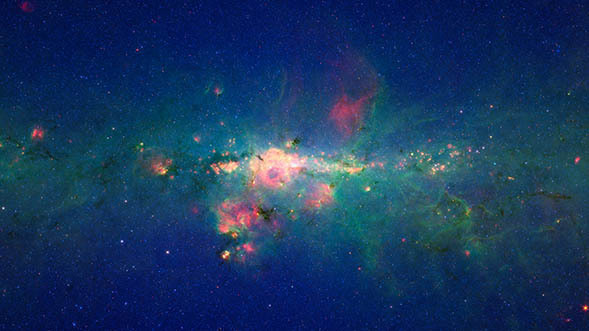
Circling the sun in its Earth-trailing orbit, Spitzer provided a remote platform for studying our own Solar System. Its sensitive infrared detectors were well-suited to identify and characterize...
One of Spitzer’s design goals was to enable astronomers to study the infrared glow of dust and debris orbiting distant stars. This is the source material for building new planets, and it...
Discovering and studying planets that orbit stars other than our sun have become one of the most active areas of astronomy in the past decades. When Spitzer launched in 2003 this was not...
Astronomy, as it name implies, is involved in the study of stars since the ancient times. The best place to find out more about these mysterious beacons of light in the sky is outside...
We live within the Milky Way galaxy, a flattened disk of hundreds of billions of other stars, but the Milky Way is but one of trillions of galaxies that fill the observable universe....
In our expanding universe, to look at increasingly distant objects is also like looking back in time to see things as they were billions of years ago. The very expansion of space expands this...



